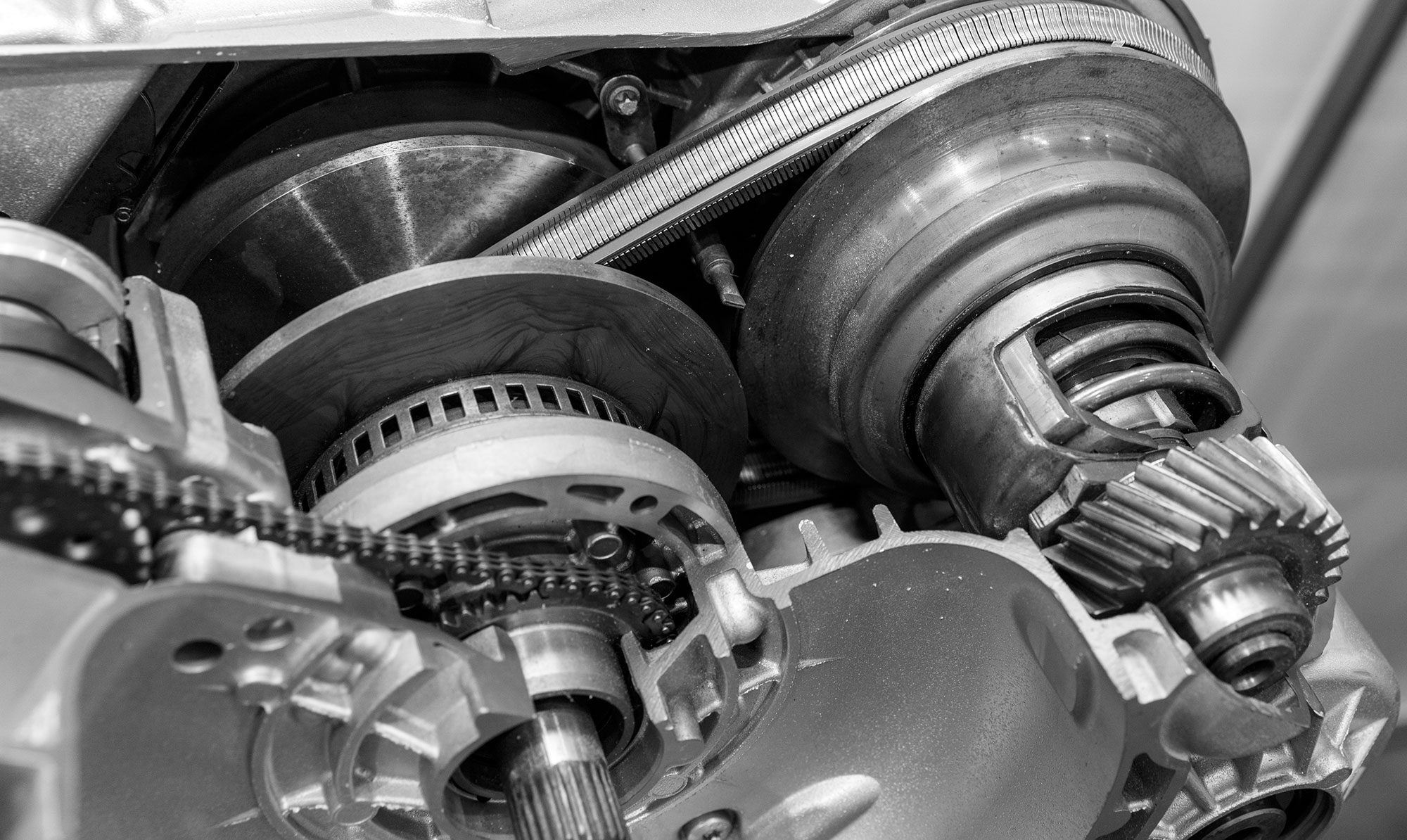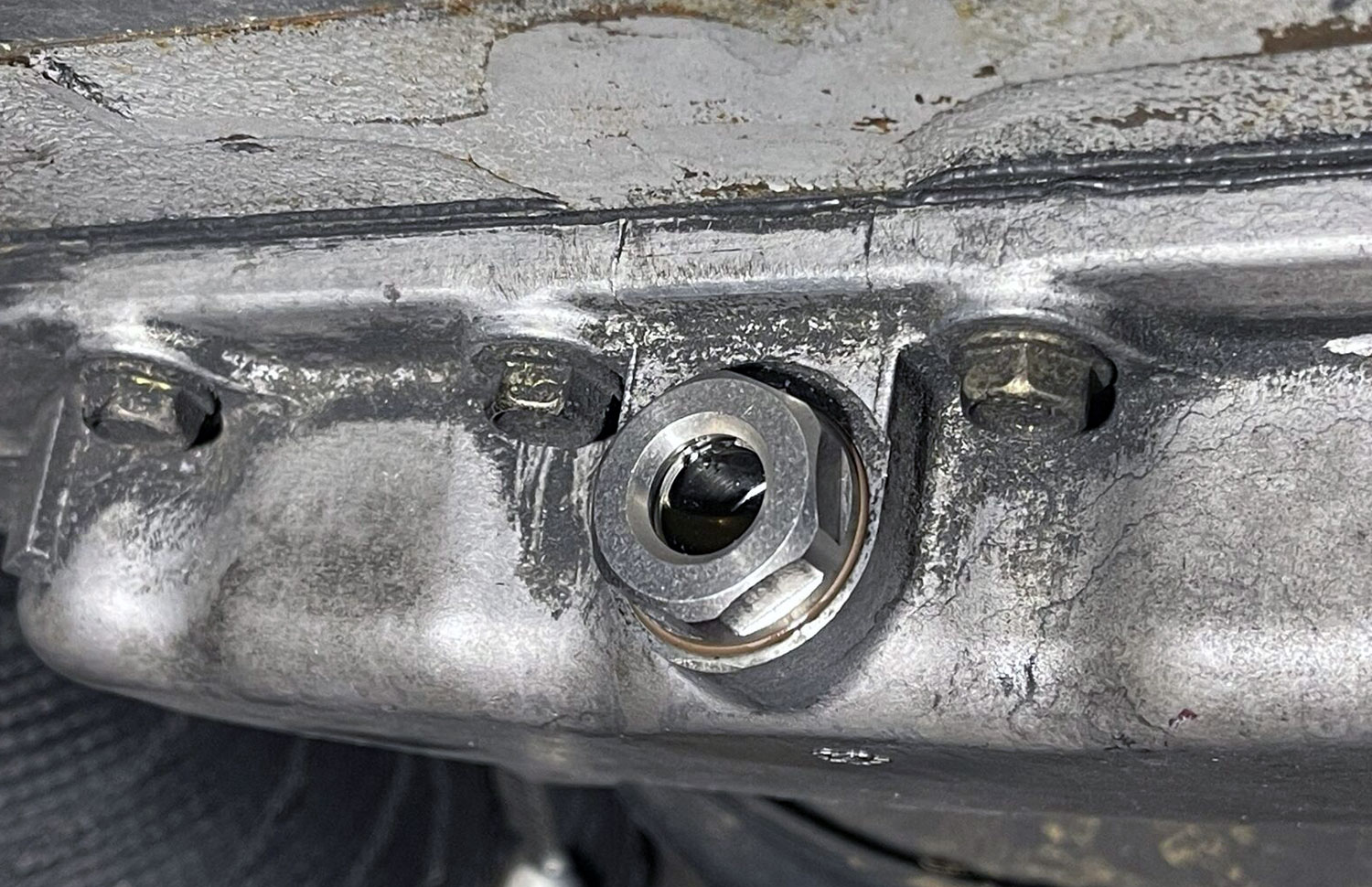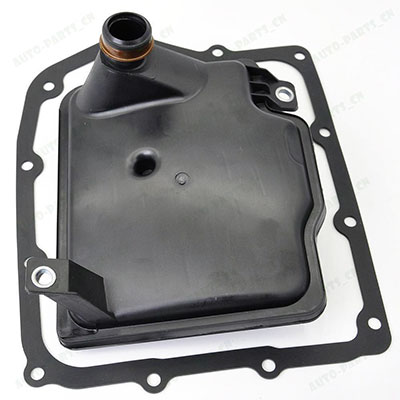Contents
Conventional wisdom used to call for replacing the fluid and transmission filter on a frequent set schedule. However, modern cars—mostly automatic transmissions—are often sold with a sealed “lifetime” transmission. Nonetheless, owners of cars with automatic transmissions still need to pay attention to the condition of their transmission fluid.
Types of Automatic Transmissions
In the early days of automatic transmissions, two to four gears were common. But many modern cars now have as many as nine or 10 gears. As a car speeds up and the engine rpm increases, the transmission changes to a higher gear through a complex set of internal components. Likewise, as it slows down, the transmission changes to lower gears.

The transmission fluid for a CVT is different than conventional automatic transmission fluids.
Meanwhile, a continuously variable transmission (CVT) uses a belt or pulley gliding across a cone instead of gears. As the cone moves back and forth, the belt diameter changes, which allows for an infinite number of gear ratios. The CVT offers quicker, seamless “shifting” and better fuel economy.
Shop now for automatic transmission partsMost transmission fluids are red or pink, which helps distinguish them from motor oil. CVT fluid is different from automatic transmission fluids. Conventional transmission fluids also vary with the car’s make and build year. Check your owner’s manual to verify which transmission fluid to use. Only replace your transmission fluid with the same correct fluid currently in use.
Many manufacturers still suggest replacing the transmission fluid and filter at least every 36,000 miles or three years. Check your owner’s manual for guidelines.
Checking Transmission Fluid
- Good transmission fluid should be pink (or have other coloring) and feel slippery.
- If you see a lot of dirt and debris, it is time to replace the fluid.
- If there is foam in the fluid, it may be overfilled.
- If the fluid smells burned, that is also a sign for replacement.
- If you see metal shavings, a transmission shop should inspect the transmission.

Checking transmission fluid levels for older systems with a dipstick is relatively simple. It’s more complex with a sealed transmission.
Transmissions with a dipstick
- Drive your car until the engine and transmission reach normal operating temperature. The coolant should be about 180 to 200 degrees Fahrenheit.
- Park the car on a level surface. Leave the car running and the transmission in Park. Set your parking brake.
- Wear safety goggles. Open the hood, being mindful of moving parts.
- Remove the automatic transmission dipstick from the tube and examine the fluid. It should look clear, feel slippery, and have some color. If it looks dull or dirty, it’s time to change the fluid.
- Use a rag to wipe the transmission fluid off the dipstick. Re-insert the dipstick, ensuring it is fully seated in the tube.
- Remove the dipstick again and see where the fluid is compared to the markings on the dipstick.
- If you need to add fluid, place a flexible funnel into the dipstick tube and pour a small amount of fluid into the tube. Check again until the dipstick indicates the fluid is within the normal fill levels.
- Replace the dipstick, securing it inside the tube.
Transmissions that don’t have a dipstick
Checking fluid levels is more complex with a sealed transmission. Check your service manual to verify the operating temperature of the transmission fluid. If you replace fluids when the transmission is at the wrong temperature, you risk over- or under-filling the transmission. This can cause damage and may void your warranty.
Sealed transmissions typically have an inspection plug and a fill plug on the top of the transmission. You may need to raise the car on jack stands or use a lift to access these plugs. A service manual will indicate the location of these plugs.

Transmission drain plug
Some cars have a digital display providing an accurate temperature reading of the transmission fluid. Otherwise, you can use an OBDII scanner. Plug the scanner into the OBDII port and locate the setting to provide a readout of the transmission fluid temperature.
- Drive the vehicle until the transmission temperature is within the temperature range specified by the manufacturer.
- Park on a level surface. If needed, place the vehicle on stable jack stands and ensure it is level. Put on safety goggles.
- First, ensure you can loosen the fill plug. Often, this plug is tight or hard to reach. If you cannot loosen this plug, we highly recommend that you take your car to a trusted mechanic. You don’t want to risk having fluid leak out of the inspection plug without the ability to add fluid through the fill plug.
- If you can loosen the fill plug, leave it in place and put a drain pan under the inspection plug.
- Loosen the inspection plug and put on insulated gloves before removing the plug. The fluid and transmission will be hot.
- If fluid leaks from the plug, it indicates overfilling. Let the excess out, and check the fluid for signs of dirt or metal shavings.
- If no fluid comes out, insert a small tube and suction out a small sample to examine the fluid condition. If you can’t see the fluid near the top of the inspection plug, it is low on fluid.
- Add a small amount of the correct transmission fluid until it starts to weep from the inspection plug.
- Insert and tighten the inspection plug. Insert and tighten the fill plug.
- Wipe off any spillage. Remove the vehicle from the jack stands if used. Check for leaks.
How to Replace or Flush Transmission Fluid
There are two primary ways to change the fluid.
Flush – A professional shop can flush the transmission fluid. They will use a machine to drain all the fluid out of the transmission, add a detergent to clean the internal components, drain out the cleaner, and add new transmission fluid. Expect to pay $250 or more for this service.
Drain and Replace – Any DIYer can do a drain-and-replace job without expensive machinery. You drain the transmission fluid in the transmission pan or reservoir. This might only be a third of all the fluid in the system. In other words, less new fluid is added to the system, lowering the cost.
Drain Automatic Transmission with a Pan and Dipstick

If you remove the transmission pan, you will need a new pan gasket.
Older unsealed transmissions have a large rectangular pan on the bottom secured with bolts. This pan will typically hold one-third of the transmission fluid used in the system. If you drain this fluid, you replace only a portion of the entire transmission’s lubricant.
Many transmission pans have a drain plug to allow the fluid to drain out. Some models do not, and you must carefully remove the pan and contents. This can get messy, so be prepared.
- Drive the car to normal operating temperature.
- Park the car on a level surface. Raise the vehicle on sturdy jack stands to access the transmission if necessary.
- Remove the drain plug if equipped, and allow the fluid to drain into a drain pan.
- As an alternative, carefully remove the transmission pan bolts, lower the pan, and allow the fluid to flow out at one end into a drain pan.
- Check the fluid for excess metal shavings and other debris.
- It is a good idea to replace the transmission fluid filter simultaneously. To do so, you must remove the transmission pan if you haven’t already.
- Remove the old filter and install the replacement.
- You will need a new pan gasket if you remove the transmission pan.
- Apply the gasket and reinstall the pan.
- Add transmission fluid through the dipstick tube using a flexible funnel. Check the level frequently to avoid overfilling.
If you use a shop to replace the fluid, expect to pay at least $100, depending on how much fluid is replaced.
Drain a Sealed Transmission
- Verify that you can loosen and remove the fill plug at the top of the transmission.
- Drive the car to get the transmission fluid to the specified operating temperatures. Park the vehicle on a level surface. Raise it on sturdy floor jacks if necessary.
- Use safety goggles and insulated gloves.
- Place a large drain pan under the drain plug. (Many transmissions have up to 15 quarts of fluid, so plan accordingly.)
- Remove the drain plug and allow the fluid to drain out completely.
- Replace the drain plug using a new rubber gasket or metal washer on the plug if necessary.
- Add fluid through the fill plug. As you approach adding the last few quarts, follow the fill procedures from above to ensure you don’t overfill it.
- Clean any spillage from the areas around the plugs.
- Drive the car for a few miles and check for leaks.
- Dispose of the fluid at a hazardous waste recycling center.
You rarely need to add transmission fluid. If the fluid level is repeatedly low, check for leaks or other signs of damage.
Shop now for transmission fluid




